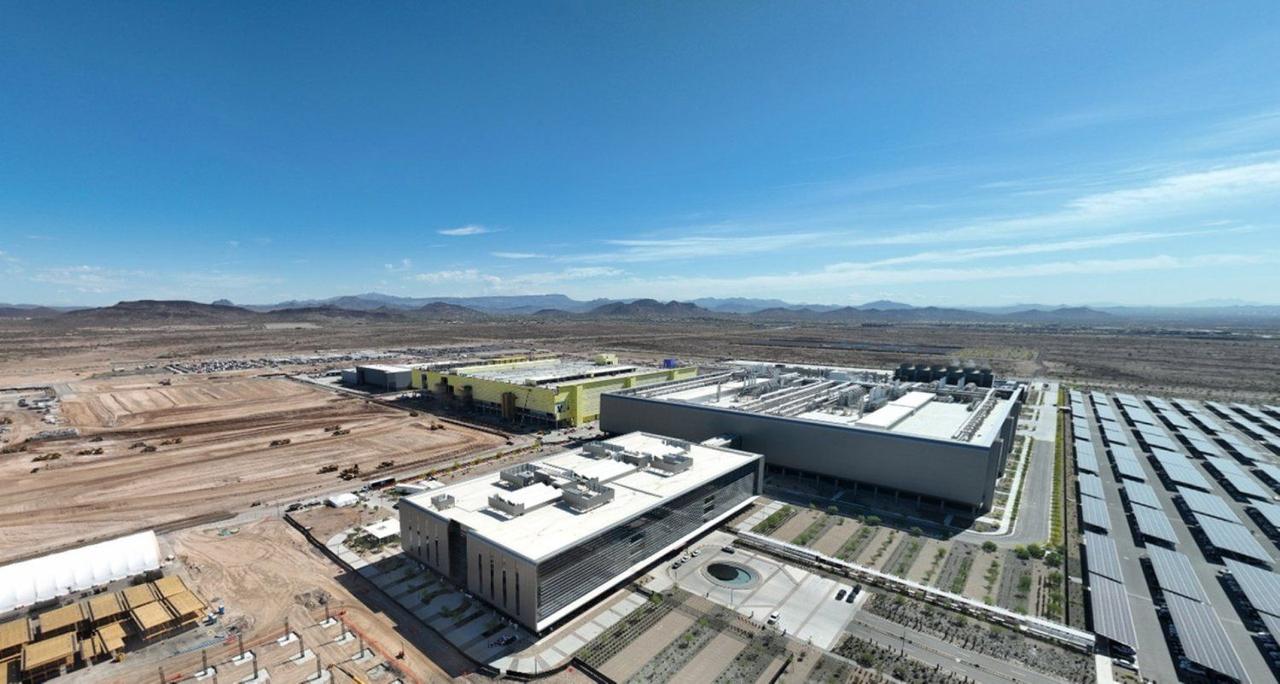AMD CEO Lisa Su Confirms Higher Costs for US-Made TSMC Chips, Emphasizes Supply Chain Resilience
6 Sources
6 Sources
[1]
AMD CEO Lisa Su says US-made TSMC chips cost up to 20% more - but they're worth it
Serving tech enthusiasts for over 25 years. TechSpot means tech analysis and advice you can trust. What just happened? AMD boss Lisa Su has confirmed something that we've been hearing for years now: buying chips from TSMC's US plants will be 5-20% more expensive than purchasing the same silicon from its Taiwan fabs. But Su added that AMD expects its first chips from TSMC's Arizona facilities by the end of the year, and that the extra expense is worth it. Speaking in an interview with Bloomberg Television after her appearance at an AI event in Washington, Su highlighted the increased price of US-made TSMC chips compared to those from its Taiwan factories. It's no secret that building and running a cutting-edge fab costs more in the US, especially during the initial start-up period. People, concrete, permits, and the whole supporting ecosystem are pricier and less mature than in Taiwan, meaning a higher per-wafer cost. But Su says that paying the extra money is worth it as it means AMD is diversifying the crucial supply of chips. This will make the semiconductor industry less vulnerable to the type of disruption it experienced during the pandemic-induced chip crisis. "We have to consider resiliency in the supply chain," she said. "We learned that in the pandemic." Su also said that the yield rates of TSMC's Arizona plants were already comparable to its fabs in Taiwan. We heard back in January that TSMC's Arizona fab was already producing AMD Ryzen 9000 chips. The company also confirmed in April that the fifth-generation Epyc Turin chips had been "brought up and validated" in Phoenix, though volume shipments aren't expected until later this year. Su told Bloomberg that the first customer-shippable lots from Arizona are expected by the end of the year, suggesting the Ryzen 9000 and Epyc Turin chips are the only AMD products being made at TSMC's US facilities right now. Reports of TSMC charging considerably more for its US-made chips stretch back to 2023 - at that time, the estimate was 30% more. In April last year, TSMC CEO C. C. Wei said microchips produced outside of Taiwan, including those in the US and Germany, would incur higher manufacturing costs, citing factors such as construction costs, operational expenditures, labor negotiations, and other related factors. However, an interesting study by Techinsights in March appeared to debunk these claims. While it found that employees cost 200 percent more in the US, modern, fully automated chip manufacturing plants don't need many staff. The bottom line, according to the study, was that TSMC needs to spend just 10% more to process a 300mm chip wafer in Arizona than in Taiwan.
[2]
AMD says US-made Ryzen chips will cost 5-20% more
The United States is pushing for domestic manufacturing, and by "pushing," I mean throwing markets into chaos with tariffs against specific countries and products decided seemingly at random. But how much will computer chips, probably the most complex and in-demand general production item on the planet, cost to make stateside? AMD's CEO has an answer, or at least a guess. Dr. Lisa Su said that chips produced at the new fabrication facility in Arizona will be "more than 5 percent but less than 20 percent" more expensive compared to Taiwan, speaking to AI industry leaders, government officials, and press in Washington DC. Su elaborated that the extra expense is worth it to diversify the incredibly complex supply chain, reports Bloomberg. The Arizona plant is owned by Taiwan Semiconductor Manufacturing Company, TSMC, the global giant of chip fabrication that partners with essentially every major cutting-edge chip designer for at least some of its output. Billions of dollars are being poured into a US push for domestic semiconductor output via the CHIPS Act, with the Arizona fab being the largest. TSMC Arizona Fabs is currently outputting hardware, but won't be fully completed until 2026. Other American chip fabs are planned for New York, Texas, Idaho, Ohio, and other locations, from corporations including Intel, Samsung, and Micron. 5-20 percent more expensive than the established manufacturing in Taiwan and other countries is a rather general figure...and one that could be easy to fudge for Dr. Su by leaving out some crucial details. Semiconductor manufacturing is a mind-bogglingly complicated business, with new fabrication plants taking years of development, to say nothing of the process of designing, testing, and finally rolling out new chip designs. It's also a cutthroat competition between corporations and the governments that want to host them. For a full and authoritative breakdown, be sure to check out PCWorld's recent interviews with Dr. Ian Cutress. At the Hill and Valley Forum, AMD both courted government officials including U.S. president Trump, and tried to put on a brave face to competitors. The biggest of those is undeniably Nvidia, which has rocketed to the top of the tech industry on years of growth selling chips to the AI industry. AMD is also making good on the AI boom, but is notably behind the 800-pound gorilla. Both corporations are trying to create favorable conditions by lobbying US politicians, crucially scoring tax breaks and favorable exceptions to export restrictions for countries like China.
[3]
AMD CEO says its chips made in the US will be up to 20% more expensive, but claims that it'll be worth the price hike
Su argues that the cost is worth it in terms of diversifying the supply chain AMD's CEO has admitted that the company's chips will be a fair bit pricier when they are produced in TSMC's factories in the US (as opposed to Taiwan). Bloomberg reports that it will be more expensive to source chips from TSMC's new Arizona plant than its Taiwan factories. TSMC is the chip maker that AMD uses to manufacture most of its processors and GPUs, and AMD is set to start receiving chips from the Arizona plant before the end of 2025). At an AI event, CEO Lisa Su said that US chips will be "more than 5% but less than 20%" costlier compared to "similar" parts produced in Taiwan. The chief executive also observed that yields in the US plant are comparable to TSMC's Taiwanese facilities. (The yield is the percentage of chips that make the grade to be used in a finished product - not every piece of silicon does, and chips in that category are often repurposed for lower-tier hardware). In an interview with Bloomberg that followed the event, Su argued that any extra expense was worthwhile in terms of diversifying where AMD is outsourcing its production. The chief executive said: "We have to consider resiliency in the supply chain. We learned that in the pandemic." Su also underlined that the demand for AI chips, wherever they are produced, isn't going anywhere and remains massive - which isn't news to anyone, of course. While yields may be similar (or so we're told), what Su doesn't mention is that TSMC's most advanced processes are exclusive to its production facilities in Taiwan. Arizona only goes as far as the N4 node, which is 4nm - whereas the cutting-edge production process for TSMC is now 2nm. Eventually, though, the plan is to manufacture those more advanced products in the US - the investment in Arizona is a huge one, after all - but for now, this is simply about adding diversity, as Su indicates. Still, all the pieces of that diversity puzzle aren't in place yet, at least according to recent reports, which observe that AMD still has to send some US-made chips back to Taiwan for finishing (if they need advanced packaging applied). Tthe plan is for that to happen in the US eventually - but for now, there's seemingly this clunky and rather impractical workaround in place as part of the rush to get more chips out of the door (to meet AI demand, which is, as mentioned, huge). That could be one of the reasons why costs may be inflated, alongside potentially higher costs for being based in the US in the first place (such as labor, perhaps). Su's estimate is quite wide-ranging here, and a price jump of 5% to 20% is a wide gulf. The former seems relatively trivial, the latter represents a much less palatable hike - slapping 20% on the cost of a typical Ryzen workhorse CPU would stick $50 on top, or thereabouts (going by the MSRP of the Ryzen 9600X, which admittedly is selling for a lot cheaper now). Okay, so you can't boil this scenario down to that outcome - there are a lot more factors to consider here, including that Su's estimate is rather vague - but the higher end of the scale provided for the potential cost increase is somewhat concerning, for sure. As is the fact that this isn't just some rumor floating down from an anonymous source somewhere in the supply chain, but that it comes from the CEO herself.
[4]
AMD Projects up to 20% Higher Costs for U.S.-Made Chips
Localizing advanced semiconductor production at TSMC's new Arizona plant introduces a price premium for AMD. At a Washington, D.C. event, CEO Lisa Su estimated that chips fabricated in the U.S. carry a production cost increase of up-to 20% compared to those from TSMC's Taiwanese facilities. Despite this additional expense, AMD has streamlined the Arizona fab to achieve yields on par with its Taiwanese counterparts and expects to receive its first shipments by the end of the current calendar year. The rationale for this strategic shift revolves around strengthening supply chain resilience. The COVID‑19 pandemic exposed significant vulnerabilities when overseas factories faced shutdowns. By diversifying manufacturing locations, Su explained, the company can reduce the likelihood of widespread production halts. This approach is viewed as an investment in operational continuity, even if it entails higher unit costs in the short term. In a follow‑up interview, Su underscored the strategic benefit of reducing supply chain vulnerability. She pointed to pandemic‑related disruptions as rationale for on‑shore fabrication. According to Su, the Arizona plant's chip yield now matches that of TSMC's established Taiwanese sites, ensuring production quality is uncompromised. Furthermore, Su addressed the complexities of U.S. export policy governing AI accelerators. She argued for a calibrated approach that upholds security without unduly hindering shipments to allied countries. Su praised the government‑industry collaboration embodied in the AI Action Plan and cited sustained investment interest from figures such as Sam Altman and Elon Musk.
[5]
AMD CEO Lisa Su Says Sourcing AI Chips From TSMC's U.S. Plants Is 20% More Expensive, Highlighting the Complications of Building Supply Chains in America
While TSMC US operations are seeing massive attraction from American clients, it is still a very expensive venture, according to AMD's CEO Lisa Su. TSMC has expanded in America at a massive pace that no one could predict. The Trump administration catalyzed the efforts of the Taiwan chip giant, which was against sourcing chips from Taiwan, which is why TSMC announced significant investments in the US. Despite seeing massive demand, TSMC's production in the US is 20% more expensive compared to what is available in Taiwan, and this was revealed by AMD's CEO Lisa Su herself while talking at an AI event in Washington (via Bloomberg). The American chip supply chain before TSMC was at a "negligible" position, with no other firm readily producing cutting-edge nodes in the nation. Apart from Intel, America didn't have any other chip company capable of catering to the market demand, but fast forward a few years, TSMC started this with their Arizona facility, and now, they intend to scale up production even further, but the business in America is pretty expensive, which is why clients like AMD and NVIDIA are to pay 5% to 20% higher in order to source chips in the US. There are plenty of reasons why producing in the US is expensive, but one of the more notable ones includes expensive labour, higher costs associated with importing equipment and setting up facilities, and the naivety of the chip supply chain. Despite being a costly venture, companies are still ready to get chips from TSMC US, mainly since the production lines in Taiwan are fully populated right now, and the second option for Big Tech is to get expensive nodes from Arizona, and it seems like this is happening, since the Taiwan giant has reported massive success with its US operations. AMD is one of TSMC's bigger customers in the US, being one of the first to place 4nm orders with the Arizona facility, and even has plans to scale up to 2nm, particularly for EPYC Venice data center CPUs. AMD's CEO claims that the demand for AI chips isn't slowing down anytime soon, and its partners are placing orders at an unprecedented pace, which is why she expects the total accelerator market to reach up to a whopping $500 billion in valuation in the next five years.
[6]
AMD CEO Highlights Higher Costs For US Made Chips As Supply Chain Strengthens - Advanced Micro Devices (NASDAQ:AMD), Taiwan Semiconductor (NYSE:TSM)
Tim Melvin's system has spotted 10X winners like NVIDIA and Matador -- see his next 6 picks and the options strategies to multiply gains at a free July 23 event. Register Here. In a significant update for the semiconductor industry, Advanced Micro Devices AMD CEO Lisa Su stated that chips produced for AMD by Taiwan Semiconductor Manufacturing Co. TSM in Arizona are more expensive than those made in Taiwan. At an AI-focused event in Washington on Wednesday, Su noted that the U.S.-manufactured chips cost between 5% and 20% more. For context, the U.S. government actively pushed the Taiwanese chipmaker to expand its advanced chip production on American soil rather than in Taiwan. Citing national security and supply chain resilience, the Trump and Biden administrations urged Taiwan Semiconductor to migrate critical manufacturing capabilities, including advanced chip packaging, to the U.S. Also Read: AMD Flags $800 Million Risk From New US Chip Export Rules As China Tariffs Add Pressure In response, Taiwan Semiconductor invested over $65 billion in its Arizona fabs. It is considering up to $100 billion in U.S. chip manufacturing projects over the next four years to support America's semiconductor leadership. Despite the increased cost, Su underscored the strategic value of this investment in an interview with Bloomberg Television, emphasizing that it significantly strengthens AMD's chip supply chain. AMD anticipates receiving its first batch of chips from TSMC's Arizona facility by the end of this year. Su also mentioned that Taiwan Semiconductor's Arizona plant has already achieved yields comparable to those of its factories in Taiwan, meaning the number of usable chips per production run is on par. The event where Su spoke was the Hill and Valley Forum, a gathering hosted by the All-In Podcast team, tech leaders, and lawmakers. President Donald Trump and other administration officials attended to promote their newly unveiled AI Action Plan. Trending Investment OpportunitiesAdvertisementArrivedBuy shares of homes and vacation rentals for as little as $100. Get StartedWiserAdvisorGet matched with a trusted, local financial advisor for free.Get StartedPoint.comTap into your home's equity to consolidate debt or fund a renovation.Get StartedRobinhoodMove your 401k to Robinhood and get a 3% match on deposits.Get Started This comprehensive plan, introduced by the White House on Wednesday under Trump's directive, aims to boost U.S. innovation, enhance AI infrastructure, and solidify America's global leadership in artificial intelligence. Su expressed strong support for the government's focus on AI and commended the practical approach of the administration's action plan. In related news concerning the semiconductor market, AMD and its main competitor, Nvidia NVDA, recently saw some easing of U.S. export restrictions on AI accelerators shipped to China. However, Su noted that uncertainties persist regarding the number of licenses that will be granted and the duration for which companies will be permitted to continue shipments to China, which remains a crucial market for semiconductors. Su concluded her remarks by highlighting the strong ongoing demand for AI chips and pointing to large-scale investments from OpenAI's Sam Altman and xAI's Elon Musk. Year-to-date, AMD stock has gained over 31%, while TSM has risen 22%. The PHLX Semiconductor Index, which includes both companies, has seen a gain of over 13%. Price Actions: AMD stock is trading higher by 1.29% to $160.70 premarket at last check Thursday. TSM is up 0.47%. Read Next: How Taiwan Is Betting Big On AI To Power Its Economy Image via Shutterstock AMDAdvanced Micro Devices Inc$160.631.25%Stock Score Locked: Edge Members Only Benzinga Rankings give you vital metrics on any stock - anytime. Unlock RankingsEdge RankingsMomentum76.07Growth97.12Quality75.37Value12.00Price TrendShortMediumLongOverviewTSMTaiwan Semiconductor Manufacturing Co Ltd$240.950.26%NVDANVIDIA Corp$172.701.12%Market News and Data brought to you by Benzinga APIs
Share
Share
Copy Link
AMD CEO Lisa Su reveals that chips produced at TSMC's US plants will cost 5-20% more than those made in Taiwan, but argues that the price increase is justified for supply chain diversification and resilience.
AMD CEO Confirms Higher Costs for US-Made Chips
AMD CEO Lisa Su has confirmed that chips produced at TSMC's US plants will cost between 5% and 20% more than those manufactured in Taiwan
1
. This revelation came during an AI event in Washington and a subsequent interview with Bloomberg Television, where Su emphasized the importance of supply chain resilience despite the increased costs2
.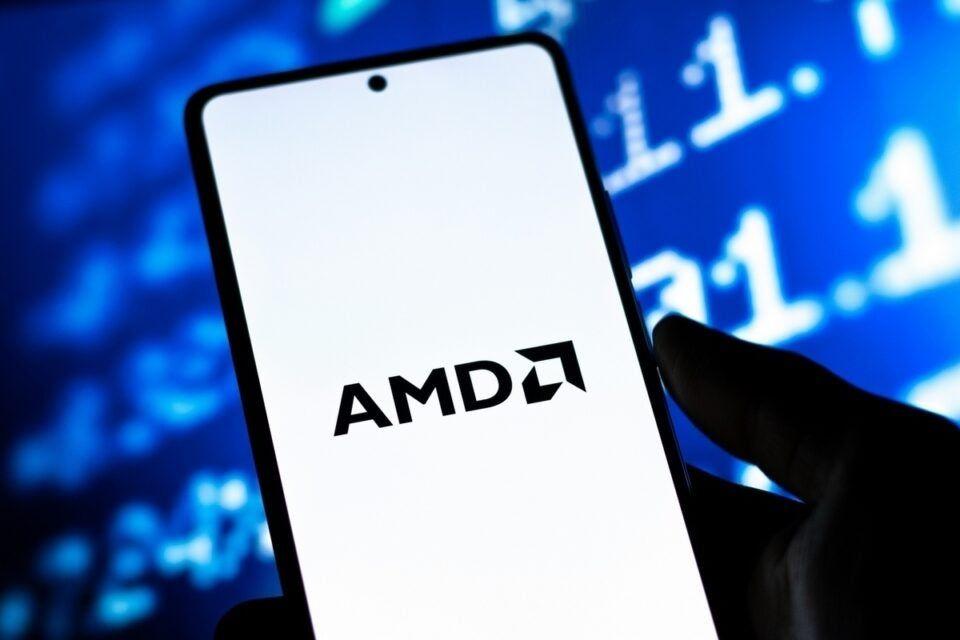
Source: Benzinga
Reasons for Higher Costs
The increased expenses for US-made chips can be attributed to several factors:
- Higher construction and operational costs in the US
- More expensive labor
- Regulatory and permitting processes
- Less mature supporting ecosystem compared to Taiwan
Despite these challenges, Su noted that the yield rates at TSMC's Arizona plants are already comparable to those in Taiwan
1
.Supply Chain Resilience and Diversification
Su argued that the additional cost is justified by the need to diversify the crucial supply of chips, making the semiconductor industry less vulnerable to disruptions like those experienced during the pandemic
3
. She stated, "We have to consider resiliency in the supply chain. We learned that in the pandemic"4
.TSMC's Arizona Facility and AMD's Plans

Source: Wccftech
TSMC's Arizona plant is a significant part of the US push for domestic semiconductor production, supported by the CHIPS Act
2
. AMD expects to receive its first customer-shippable lots from the Arizona facility by the end of 20253
.Currently, the Arizona plant can produce chips using the N4 (4nm) process, while TSMC's most advanced facilities in Taiwan are capable of 2nm production
3
. AMD has plans to scale up to 2nm production in the US, particularly for EPYC Venice data center CPUs5
.Related Stories
Impact on Consumers and the Industry
The potential price increase of 5% to 20% could have significant implications for consumers and the industry:
- A 20% increase could add approximately $50 to the cost of a typical Ryzen CPU
3
. - The higher costs may affect AMD's competitiveness in the market, particularly against rivals like Nvidia
2
. - The increased expenses could potentially be passed on to consumers, affecting the pricing of various electronic devices.
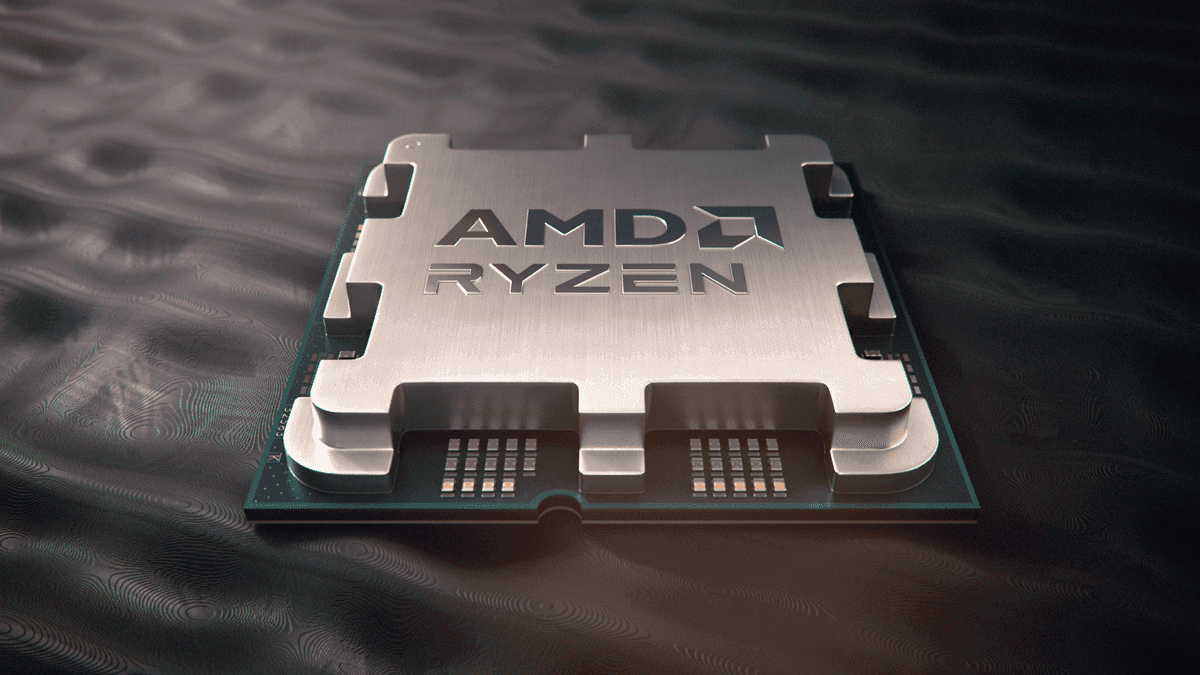
Source: TechRadar
Future Outlook and AI Chip Demand
Despite the challenges, Su remains optimistic about the future of the semiconductor industry, particularly in the AI sector. She expects the total accelerator market to reach a valuation of up to $500 billion in the next five years
5
. Su also emphasized the need for a calibrated approach to US export policy governing AI accelerators, balancing security concerns with the need to maintain shipments to allied countries4
.References
Summarized by
Navi
[3]
Related Stories
AMD Gears Up for US Chip Production Amid Rising Demand and TSMC Price Hikes
17 Apr 2025•Business and Economy
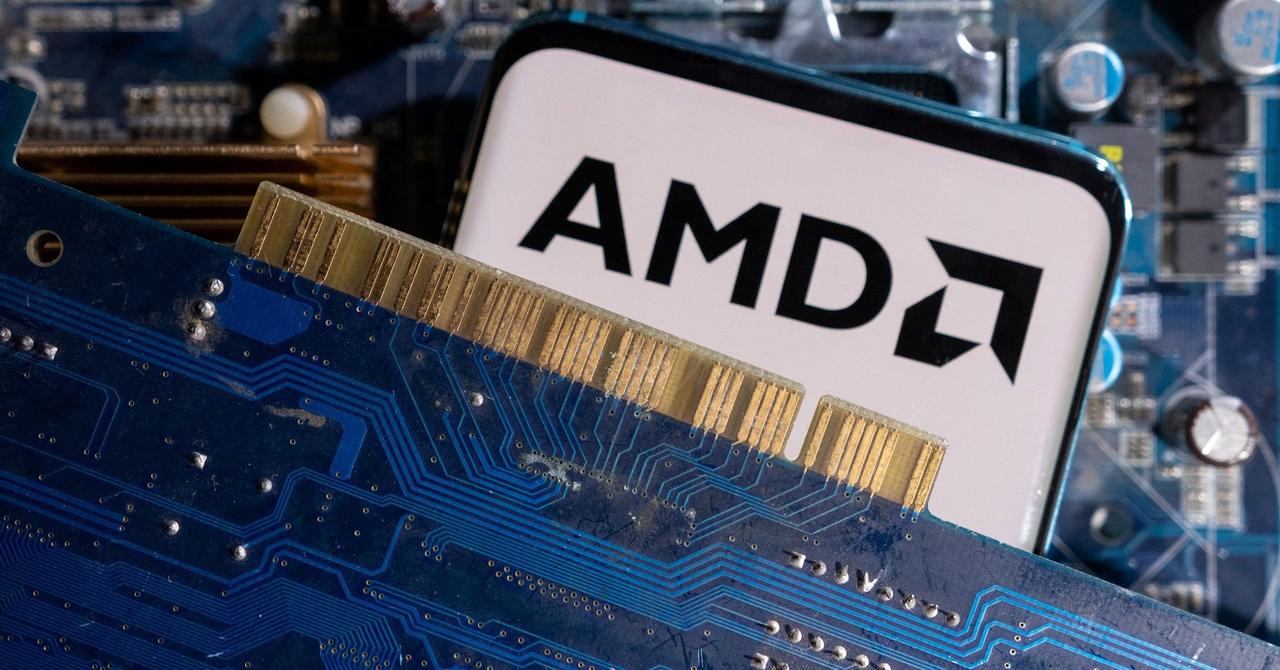
AMD Set to Become TSMC's Second Major Customer at Arizona Fab, Boosting US AI Chip Production
08 Oct 2024•Business and Economy

Nvidia and TSMC Celebrate First US-Made Blackwell Wafer, Marking Milestone in American Chip Manufacturing
18 Oct 2025•Technology
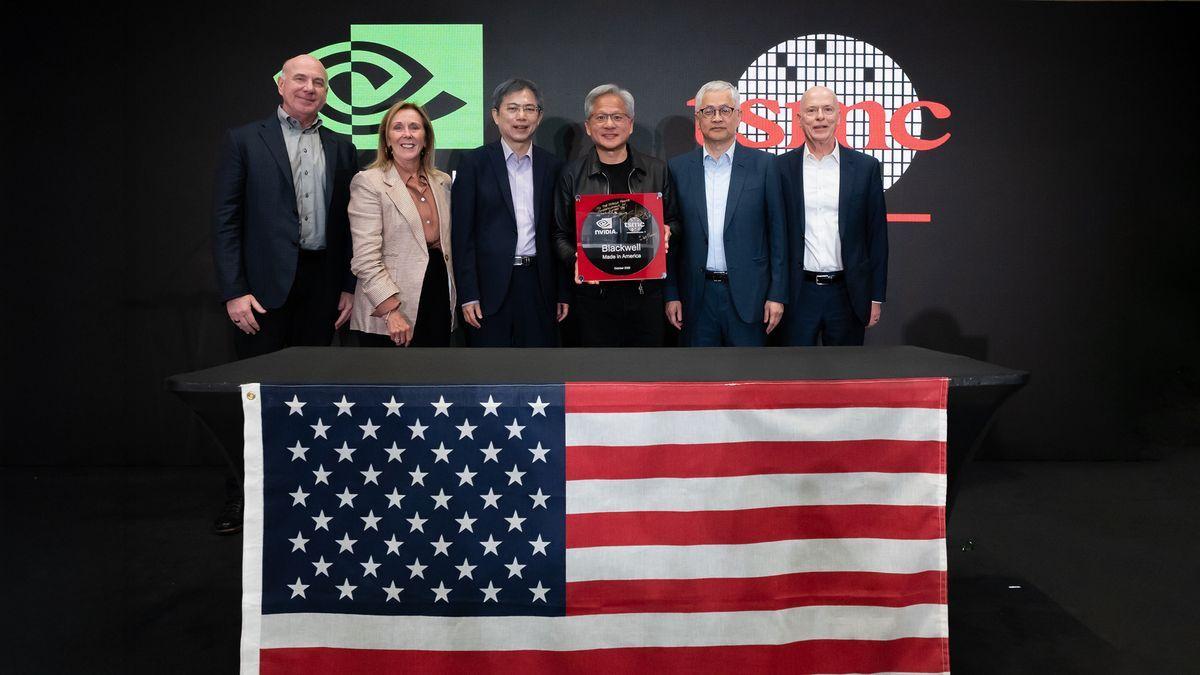
Recent Highlights
1
Google launches Gemini 3 Flash as default AI model, delivering speed with Pro-grade reasoning
Technology

2
OpenAI launches GPT Image 1.5 as AI image generator war with Google intensifies
Technology

3
OpenAI launches ChatGPT app store, opening doors for third-party developers to build AI-powered apps
Technology

